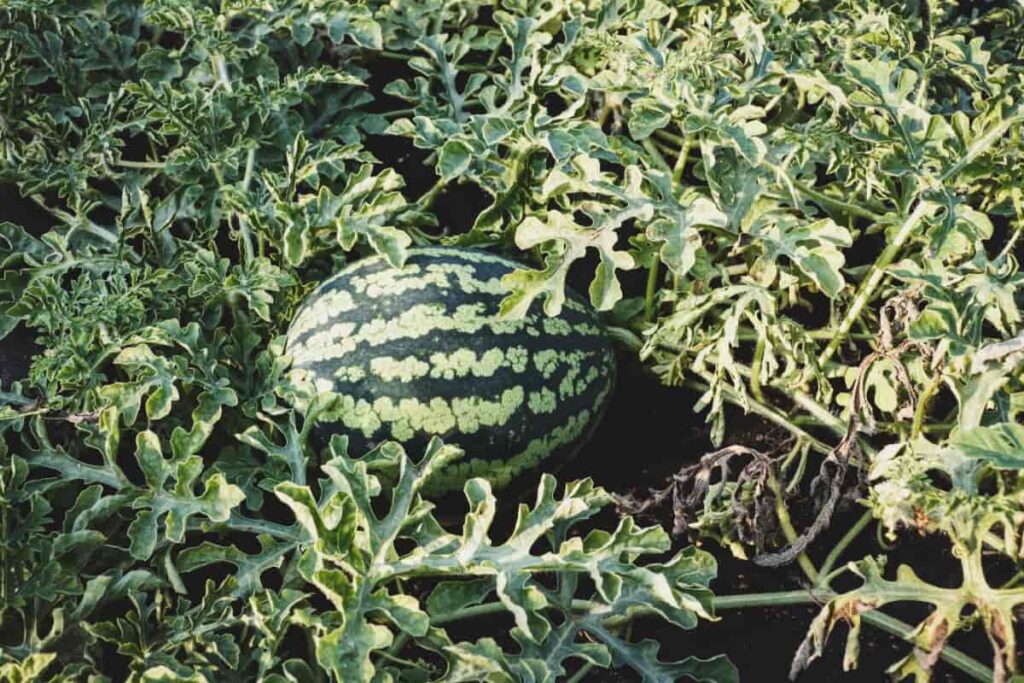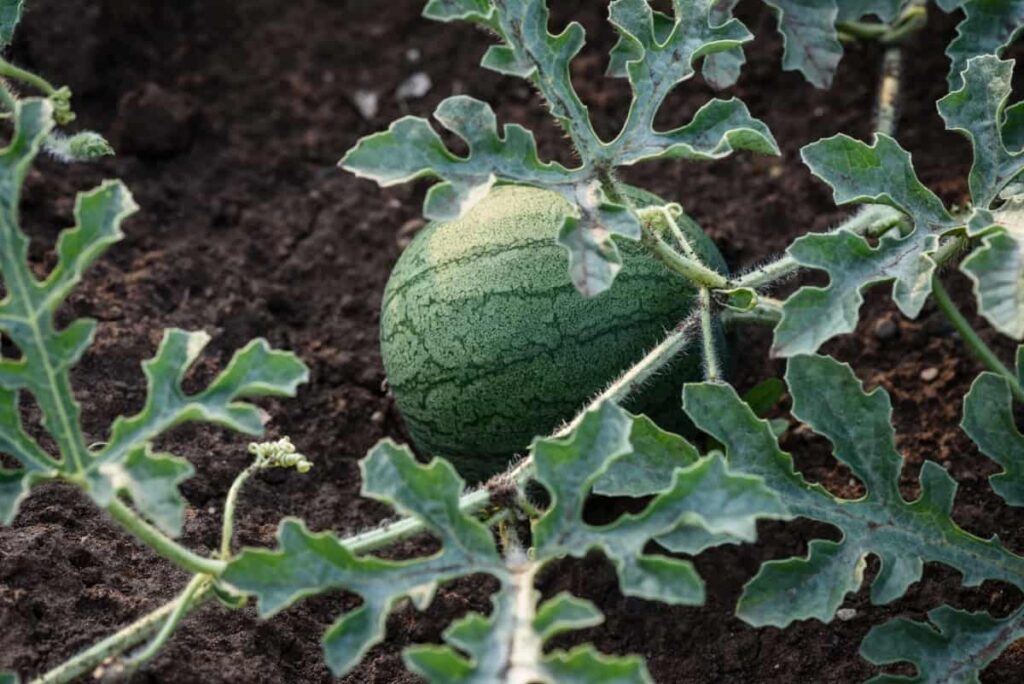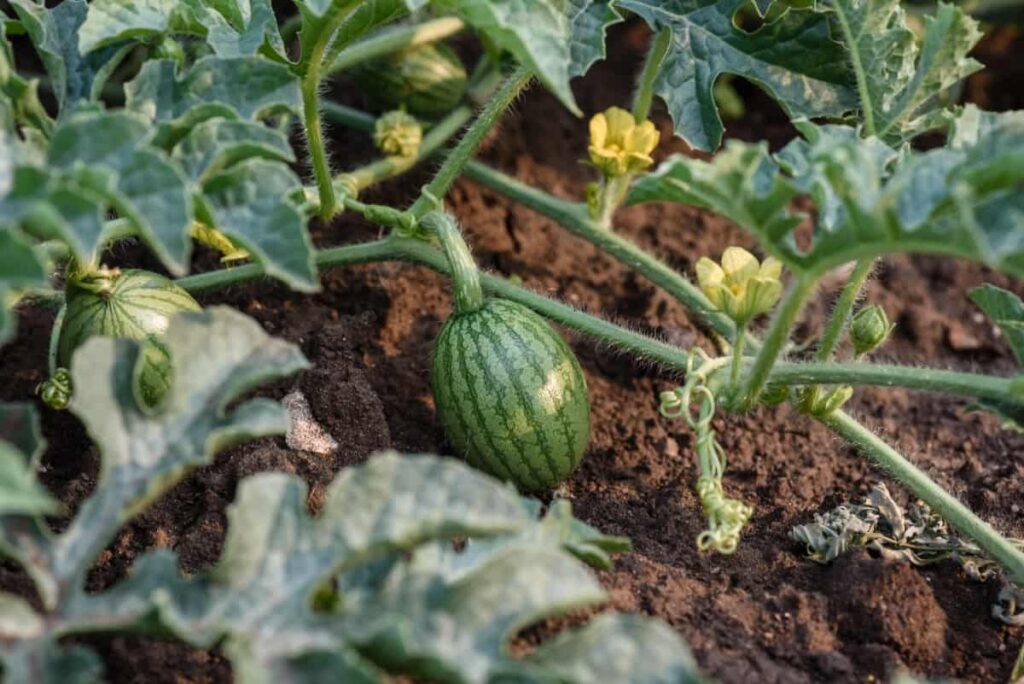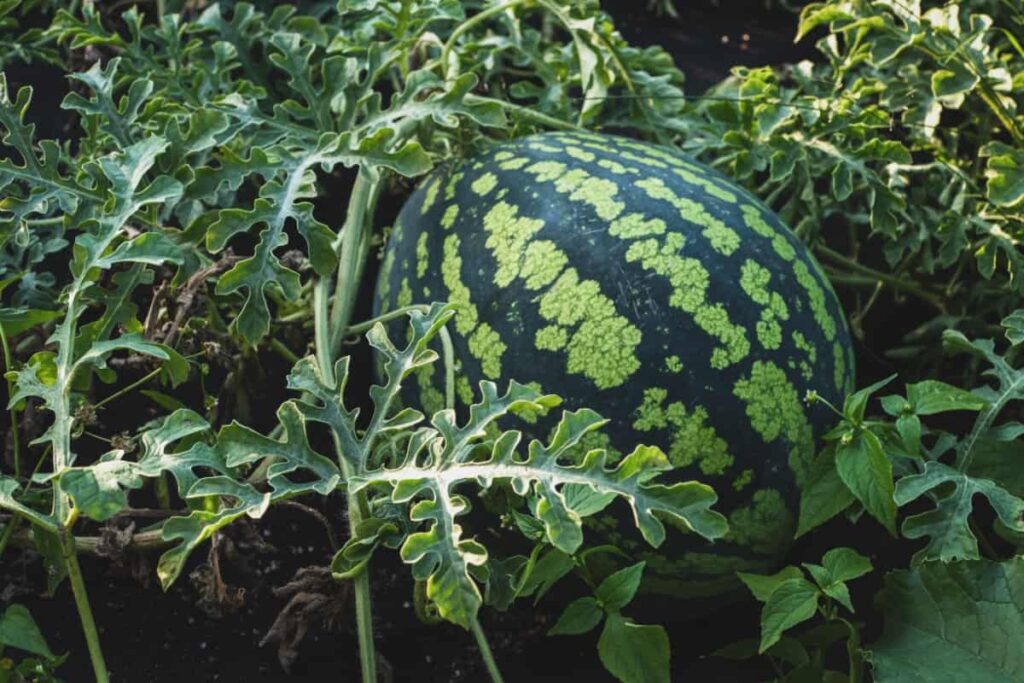Watermelon (Citrullus lanatus) farming in the Philippines is a thriving industry that plays an important role in the agricultural sector. With its favorable climate and soil, the Philippines has become an ideal location for Watermelon cultivation. Watermelon farming holds great importance in the Philippines due to its significant contribution to the local economy.

Watermelon Farming in the Philippines
Climate and Soil Requirements for Watermelon Farming
Watermelons are a popular and profitable crop to cultivate in the Philippines, but they require specific climate and soil conditions to thrive. Firstly, Watermelons prefer warm temperatures ranging from 25°C to 35°C. In terms of soil requirements, Watermelons prefer well-drained soils with a pH level of 6.0 and 7.5. To ensure optimal growth, choose a site with full sun exposure where the Watermelon plants can receive at least six hours of direct sunlight daily.
Varieties of Watermelon Suitable for the Philippines
The country’s diverse climate and soil conditions make it ideal for cultivating different types of Watermelons. One popular Watermelon variety in the Philippines is the Sugar Baby Watermelon, known for its small size and sweet flavor. It matures quickly and has a high yield, making it a favorite among farmers. Another option is the Charleston Gray Watermelon, which has large fruits with bright red flesh.
For those looking for seedless varieties, the Crimson Sweet Watermelon is an excellent choice. It produces large, juicy fruits without any pesky seeds. The Jubilee Watermelon, on the other hand, offers a deliciously sweet taste with its vibrant red flesh. In recent years, hybrid varieties such as Sangria have gained popularity in the Philippines. Selecting the right variety depends on factors like local market demand, climate suitability, and personal preferences of farmers.
Watermelon Production Areas in the Philippines
The Philippines boasts abundant production areas dedicated to cultivating Watermelons. Regions such as Pangasinan (in Luzon), Bukidnon (in Mindanao), and Negros Occidental (in Visayas) are known as major players in this industry due to their extensive farmlands dedicated solely to growing these juicy fruits.
In Luzon, particularly in Central Luzon and Cagayan Valley, vast stretches of fertile land provide favorable conditions for Watermelon cultivation. In the south, the Visayas region also boasts significant areas dedicated to Watermelon production. Regions like Western Visayas and Central Visayas have a conducive climate that supports high-quality yields year-round.
Watermelon Season in the Philippines
The Watermelon season in the Philippines typically starts in March and lasts until June, coinciding with the dry season when temperature levels are high and rainfall is minimal. During this time, farmers across the country eagerly prepare their fields and sow Watermelon seeds. As the months progress and the temperature rises even further, these juicy fruits thrive under the scorching sun.
In case you missed it: How to Grow Watermelon Faster: Best Tips to increase Flowering, Fruiting, and Production Yield

In some regions of the country, particularly in Luzon and Mindanao, where large-scale commercial farms are prevalent, multiple harvests can be achieved within a single growing season. This allows farmers to maximize their crop yield while meeting market demands throughout several months.
Pest and Disease Management in Watermelon Farming
Protecting your crop from pests and diseases ensures a healthy harvest and maximizes your profits. One common pest that affects Watermelons is the cucumber beetle. These small insects feed on the leaves, stems, and fruits of the plants. To control them, you can use insecticides or biological control, such as releasing beneficial insects. Another common issue for Watermelon farmers is powdery mildew.
Regularly monitoring your Watermelon plants for early signs of infection and applying fungicides can help prevent its spread. Aphids are another Watermelon pest that can wreak havoc on crops by sucking sap from the plant’s tissues. These tiny insects multiply quickly, so it’s important to regularly inspect your plants for infestation and apply appropriate insecticides if necessary.
Harvesting and Post-Harvest Management
You want to make sure that you pick them at the ripeness for maximum sweetness and flavor. To determine if a Watermelon is ready for harvest, look out for some key indicators. The skin color should be dull rather than shiny, the underside of the melon should have a creamy yellow color, and when you tap on it with your knuckles, it should produce a deep hollow sound.
When picking your Watermelons, handle them with care to avoid any damage. Cut the stem about an inch above the fruit using a sharp knife or garden shears. Once harvested, it’s important to properly store and manage your Watermelons to ensure their longevity and quality.
Statistics of Watermelon Production in the Philippines
Watermelon production in the Philippines plays a significant role in the country’s agricultural landscape and economy. The statistics of Watermelon production in the Philippines highlight its importance as one of the top fruit crops grown across the nation. According to the PSA (Philippine Statistics Authority) data,
Watermelon production has been steadily increasing over the years. The majority of Watermelon production in the Philippines is concentrated in regions such as Central Luzon, Northern Mindanao, Western Visayas, and CALABARZON. These areas provide favorable conditions for cultivating this juicy fruit due to their suitable climate and fertile soil.
Watermelon Yield Per Hectare Philippines
The average yield of Watermelon per hectare in the Philippines is approximately 30 tons/hectare. The average yield in the country varies depending on many factors like climate, soil conditions, cultivation practices, and pest management techniques.
Watermelon Farming in the Philippines Cost per Hectare
The cost of Watermelon farming in the Philippines depends on various factors such as land preparation, seed acquisition, labor, fertilizers, pest control measures, irrigation systems, and post-harvest handling.
| Expense Category | Estimated Cost (PHP) | Notes |
| Land Preparation Cost | 15,000 | Includes plowing, harrowing, leveling |
| Seed Purchase | 5,000 | Cost of Watermelon seeds per hectare |
| Planting Cost | 3,000 | Labor costs for planting |
| IrrigationCost | 10,000 | Setup and operational costs for irrigation |
| Fertilizers and Pesticides | 15,000 | Cost of fertilizers and pesticides |
| Labor for Maintenance | 20,000 | Regular weeding, fertilizing, and monitoring |
| Harvesting Cost | 10,000 | Labor costs for harvesting |
| Transport and Marketing | 15,000 | Transporting produce and marketing expenses |
| Miscellaneous Costs | 5,000 | Contingency funds for unforeseen expenses |
Watermelon Farming Profit in the Philippines
The demand for this juicy fruit is consistently high, both domestically and internationally. The profit can vary based on specific circumstances, location, market conditions, and farming practices.
| Revenue Category | Value | Notes |
| Total yield (tons) | 30 | Estimated yield per hectare |
| Average Market Price (PHP/kg) | 15 | Estimated market price per kg |
| Gross Revenue (PHP) | 450,000 | Total revenue from sales |
Total Profit per Hectare (2.48 acres) = Total Revenue – Total Cost = 450,000 – 98,000 = 3,52,000 (PHP)
In case you missed it: Watermelon Farming Information Guide

Government Initiatives and Support for Watermelon Farmers
The government of the Philippines recognizes the importance of Watermelon farming in boosting agricultural productivity and supporting local farmers. As a result, they have implemented various initiatives and programs to provide support to Watermelon farmers across the country. One such initiative is the provision of financial assistance through loans and grants.
Another initiative is the Department of Agriculture’s High-Value Crops Development Program (HVCDP), which aims to improve the productivity and profitability of high-value crops like Watermelons. In addition to these initiatives, there are also market linkages established by the government that connect Watermelon farmers with potential buyers. To further boost the competitiveness of Filipino Watermelon growers in both domestic and international markets, the government also provides market information services.
Future Prospects in Watermelon Farming in the Philippines
The future of Watermelon farming in the Philippines looks promising, as there is a demand for this juicy and refreshing fruit. With its tropical climate, the country has great potential to increase its Watermelon yield and become a major player in the global market. Furthermore, advancements have made it easier for farmers to improve productivity and efficiency on their farms. The Department of Agriculture provides financial assistance through loans or grants specifically targeting small-scale farmers looking to expand their operations or adopt modern farming techniques.
In case you missed it: Carrot Farming in the Philippines: How to Plant and Grow Carrots for Profit in the Philippines Climate

Conclusion
Watermelon farming plays a vital role in the Philippines’ agricultural sector. Watermelons are a popular fruit consumed by Filipinos year-round. The Philippines has favorable climatic conditions that allow for year-round production of high-quality melons. As such, Filipino-grown Watermelons have gained recognition in international markets due to their taste and quality.
- Budget Friendly Sheep Shed Ideas: Cheap and Low-Cost Tips
- How Much Do Cattle Farmers Make: Revenue Streams in Cattle Farming
- Management Pests and Diseases in Your Cotton Field
- Sheep Farming Business Plan for Beginners
- Aquaponic Farming at Home: A Step-By-Step Guide
- Profitable Village Farming Business Ideas in 2024
- High-Yield Aquaculture: Fast-Growing Fish for Farming
- Effective Fish Pond Construction Techniques for Beginners
- Irrigation and Water Management in Pineapple Farming
